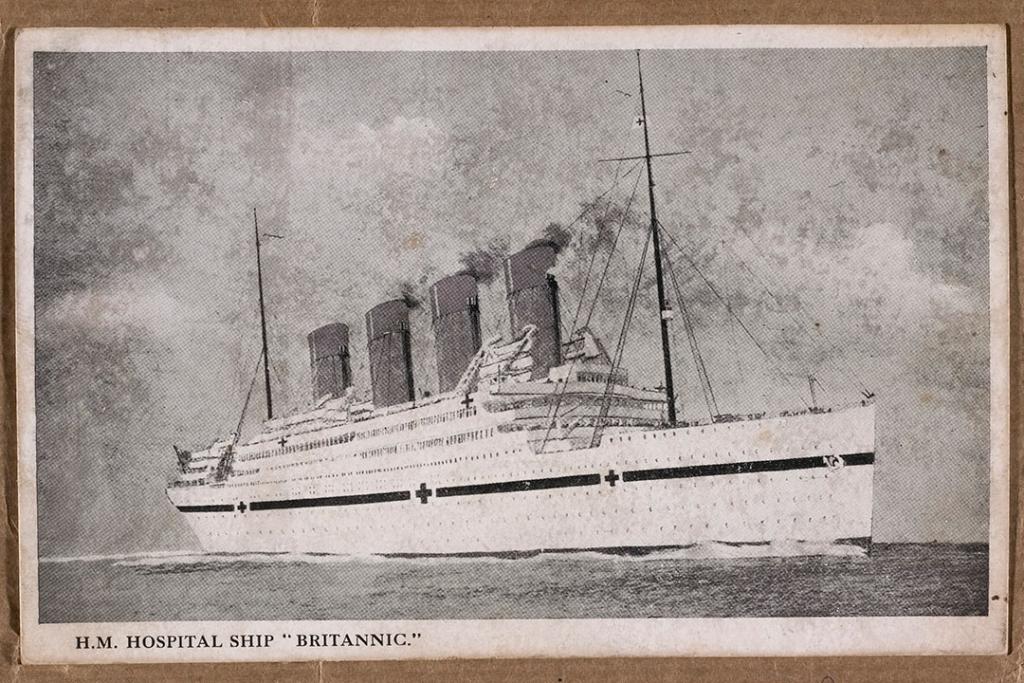Remembering Britannic - Titanic's sister ship

Hospital ship Britannic, from Florence Irving's scrapbook. DX/2108/4/3
Built at Harland and Wolff’s shipyard in Belfast, White Star Line’s Britannic was the third of the Olympic-class passenger liners - sister ship to Olympic and Titanic. As a result of the tragedy of Titanic in 1912, alterations were made to Britannic in order to improve safety on board.
Britannic was launched in 1914 but was requisitioned by the British Government following the outbreak of the First World War. On 21 November 1916, HM Hospital Ship Britannic had just departed on her sixth voyage when she struck a mine and sank off the Greek coast. More than 1,000 crew, doctors and nurses were on board, and 30 people lost their lives. Britannic sank in 55 minutes and was the largest ship lost in the First World War.
Hospital ships
Several of Liverpool’s large liners were converted for use as hospital ships, including Britannic, Aquitania, and Mauretania. Hospital facilities were constructed on board so they could provide medical services near the battlefields and transport the more severely wounded back to Britain.
The Hague Convention of 1907 stipulated that hospital ships would be granted immunity from enemy attack. They were painted white with a green horizontal stripe and red crosses to ensure they were easily recognised. Despite this, several hospital ships struck mines or were torpedoed and, when Germany declared unrestricted warfare in 1917, many of these vessels were targeted. Women serving as nurses found themselves on the frontline for the first time.

Florence Irving, with her nickname 'Henry' written under the photo. DX/2108/4/1
Florence Irving
One such nurse was Florence Irving, a district nurse and midwife who enlisted for service with the Red Cross at the outbreak of war in 1914. She treated wounded soldiers on board Britannic and was on the ship when it sank. Florence survived and went on to treat patients at field hospitals in France. She was later decorated for her wartime service.
Her service medals, badges, and Red Cross arm band were donated to the Maritime Museum by her family, along with papers and a scrapbook in which Florence kept photos and mementos of her wartime experiences. You can see some of these objects as part of our Lusitania online collection.
